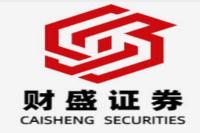Japan Tightens Grip on Semiconductor Equipment: Implications for Global Supply Chains
Meta Description: Japan's recent move to add semiconductor equipment to its list of export-controlled items has sparked global concern. This article delves into the implications of this decision for global supply chains and examines its impact on the semiconductor industry.
The world's tech landscape is in a constant state of flux, and the latest shakeup comes from Japan's decision to tighten its grip on exports of semiconductor equipment. This move, announced in July 2023, has sent ripples through the industry, leaving many wondering about the implications for global supply chains and the future of chip production.
This isn't just a random decision from a nation known for its technological prowess. Japan's move is a strategic one, driven by a complex interplay of geopolitical factors, national security concerns, and the desire to maintain its technological edge. It's a move that signals a shift in the balance of power in the semiconductor industry, raising questions about the future of global chip production and the potential impact on the companies and consumers who rely on these intricate components.
This article dives deep into the intricacies of this decision, exploring its roots, its potential ramifications, and the broader context within which it unfolds. We'll examine the factors driving this move, the specific equipment targeted, and the potential consequences for major players in the semiconductor industry. We'll also explore the implications for global supply chains, the potential for increased geopolitical tension, and the broader implications for innovation and technological advancement. Get ready to delve into the heart of the semiconductor industry and understand the intricate dance between technology, geopolitics, and the global economy.
Why Semiconductor Equipment?
The semiconductor industry is the backbone of modern technology. From smartphones to supercomputers, every device relies on these tiny chips. Japan, a powerhouse in the semiconductor industry, has long been a major supplier of key equipment used in chip production. However, the recent decision to add this equipment to its list of export-controlled items signifies a shift in its strategy, a move that goes beyond mere economic considerations.
Here's the breakdown of why semiconductor equipment is at the center of this geopolitical storm:
- National Security: In an increasingly interconnected world, reliance on foreign suppliers for critical technologies can pose national security risks. Semiconductor manufacturing is a cornerstone of national defense, and Japan, like many other countries, is keen on ensuring its self-sufficiency in this area.
- Strategic Advantage: Semiconductors drive innovation and technological advancement, and access to cutting-edge equipment is vital for maintaining a competitive edge. Japan's move can be seen as a way to protect its technological leadership and prevent potential rivals from gaining access to the most advanced equipment.
- Geopolitical Tensions: The global semiconductor industry is caught in the crosshairs of geopolitical tensions, particularly the ongoing rivalry between the United States and China. Japan's move can be interpreted as a strategic maneuver to align with the US's efforts to restrict China's access to key technologies.
- Economic Considerations: The semiconductor industry is a lucrative business, and Japan's move to control exports of key equipment can have significant economic implications. It could potentially lead to higher prices for chip manufacturers, which could in turn impact the cost of consumer electronics and other products.
The Equipment in Focus: A Look at the Targets
The list of export-controlled semiconductor equipment includes a wide range of machines crucial for chip production, spanning different stages of the manufacturing process. These include:
- Lithography Equipment: This is the heart of chip manufacturing, allowing manufacturers to pattern intricate circuits onto silicon wafers. Japan's advanced lithography machines are critical for producing the most sophisticated chips, making this category a key target for export controls.
- Etching Equipment: Etching machines use chemical processes to remove unwanted material from the silicon wafer, shaping the intricate patterns created by lithography. Japan's etch equipment is known for its precision and reliability, making it essential for high-performance chip production.
- Deposition Equipment: This equipment is used to deposit thin layers of materials onto the silicon wafer, creating the various components of a chip. Japan's deposition equipment is highly sought after for its ability to deposit materials with exceptional purity and uniformity.
- Inspection Equipment: Inspection machines are crucial for ensuring the quality of manufactured chips, detecting defects and ensuring that each chip meets strict performance standards. Japan's inspection equipment is renowned for its sensitivity and accuracy, allowing manufacturers to identify even the smallest imperfections.
Implications for the Global Semiconductor Industry
Japan's move has far-reaching implications for the global semiconductor industry, impacting manufacturers, suppliers, and consumers alike.
Here's a closer look at the potential consequences:
- Supply Chain Disruptions: The restrictions on exports of key equipment could lead to disruptions in the global semiconductor supply chain. Chip manufacturers reliant on Japanese equipment may face delays in production, potentially impacting the availability of chips for various devices.
- Increased Costs: The shortage of equipment caused by export controls could drive up prices for chip manufacturers. This could translate into higher costs for consumer electronics, automobiles, and other products that rely on chips.
- Geopolitical Tensions: Japan's move has the potential to further escalate geopolitical tensions, particularly between the US and China. The restrictions on exports to China could be seen as a hostile act, potentially triggering retaliatory measures.
- Innovation and Development: The restrictions on exports could hinder innovation and development in the semiconductor industry. Manufacturers reliant on Japanese equipment may be unable to access the latest technologies, potentially slowing down the pace of technological advancement.
- Shifting Power Dynamics: Japan's move could reshape the global semiconductor landscape, potentially leading to a shift in power dynamics. Countries with access to advanced equipment and manufacturing capabilities could gain a strategic advantage.
The Future of Semiconductor Manufacturing: A Look Ahead
The semiconductor industry is poised for a significant transformation in the years to come. Japan's decision to tighten export controls adds another layer of complexity to this already dynamic landscape. The industry faces a confluence of challenges, including:
- Technological Advancements: The relentless pursuit of miniaturization and increased performance continues to drive the development of new technologies, demanding ever more sophisticated equipment and manufacturing processes.
- Geopolitical Tensions: The growing rivalry between the US and China, coupled with other geopolitical uncertainties, creates a volatile environment for the semiconductor industry, impacting investment, trade, and technological development.
- Supply Chain Resilience: The global semiconductor supply chain has become increasingly complex and fragile, making it vulnerable to disruptions caused by natural disasters, political instability, and other unforeseen events.
- Sustainability: The environmental impact of semiconductor manufacturing, particularly energy consumption and waste generation, is becoming a growing concern, prompting a focus on sustainable practices and technologies.
Conclusion: A Strategic Shift and a Call for Collaboration
Japan's decision to tighten export controls on semiconductor equipment is a strategic move with far-reaching implications for the global semiconductor industry. While the move aims to protect national security and bolster technological leadership, it also raises concerns about potential supply chain disruptions, increased costs, and geopolitical tensions.
The future of the semiconductor industry hinges on a delicate balance between innovation, geopolitical stability, and sustainable practices. The industry needs a collaborative approach, with nations working together to address shared challenges like technological advancement, supply chain resilience, and responsible manufacturing practices. Only through collaboration can the semiconductor industry navigate the complex landscape of the 21st century and continue to drive technological progress that benefits humanity.
FAQ
Q: What are the specific types of semiconductor equipment that Japan is restricting exports of?
A: Japan is restricting exports of a wide range of semiconductor equipment, including lithography, etching, deposition, and inspection machines. These are critical components of the chip manufacturing process, and their restriction could significantly impact the industry.
Q: How will this decision affect chip manufacturers in other countries, particularly in China?
A: This move could significantly affect chip manufacturers in China, as they rely heavily on Japanese equipment. They may face delays in production, increased costs, and difficulty accessing the latest technologies. This could hinder China's ambitions to become a dominant player in the semiconductor industry.
Q: What are the potential economic consequences of Japan's decision?
A: Japan's decision could lead to higher prices for semiconductor equipment, which could translate into higher costs for chip manufacturers. This could impact the prices of consumer electronics, automobiles, and other products that rely on chips, potentially impacting consumer spending.
Q: Is this move a sign of growing geopolitical tensions between the US and China?
A: Japan's move can be seen as a strategic maneuver in line with the US's efforts to restrict China's access to key technologies. This could escalate geopolitical tensions between the two superpowers, potentially leading to a trade war or other forms of economic retaliation.
Q: What steps can be taken to mitigate the negative implications of this decision?
A: The industry needs to find ways to mitigate the negative implications of Japan's decision. This could involve diversifying supply chains, investing in domestic production capabilities, and fostering collaboration between nations to address shared challenges in the semiconductor industry.
Q: What does the future hold for the global semiconductor industry?
A: The future of the semiconductor industry is uncertain, but it is likely to be shaped by a confluence of factors including technological advancements, geopolitical tensions, and a growing focus on sustainability. The industry needs to adapt to these challenges and find ways to navigate the complexities of the 21st century.



